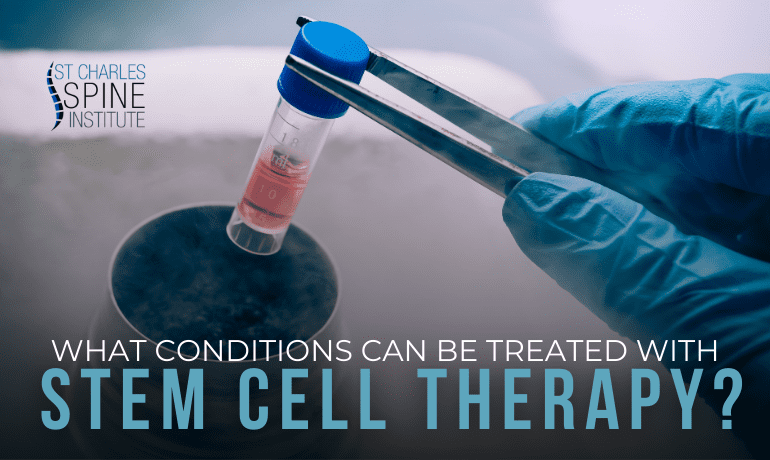What Conditions Can Be Treated with Stem Cell Therapy?

St. Charles Spine Institute is committed to offering the latest therapies and treatments for spine care that have a demonstrated record of success in treating discrete conditions. One of the most promising advancements, stem cell therapy, has shown remarkable success in treating several spinal problems.
Stem cell therapy, a type of regenerative medicine, harnesses the body’s natural healing ability to repair damaged tissues and reduce inflammation. But what conditions can stem cell therapy effectively treat? Fortunately, this groundbreaking approach may benefit some of the most common orthopedic and spinal conditions.
What Is Stem Cell Therapy?
Stem cell therapy uses specialized cells to promote natural repair by regenerating new healthy tissue.
Typically, the body’s healthy cells can only reproduce cells of the same type. For example, skin cells can only reproduce skin cells, and heart cells can only reproduce heart cells.
Stem cells are so-called because they have the unique trait of being able to differentiate into various cell types. Because stem cells can become different types of tissue, they can be used to repair damaged cartilage, muscles, tendons, and even spinal structures. Using autologous stem cells (stem cells derived from the patient’s body, usually from bone marrow or fatty tissue), the surgeons at St. Charles Spine Institute can safely introduce these cells into damaged tissue to stimulate the body’s healing response and build healthy tissue.
Conditions Treated with Stem Cell Therapy
Stem cell therapy is particularly beneficial for musculoskeletal and spinal conditions that involve tissue degeneration, chronic pain, or injury. Here are some of the conditions that have been effectively treated through regenerative medicine:
1. Osteoarthritis
Osteoarthritis (OA), a common condition that often arises as we age, is a degenerative joint disease that causes the breakdown of cartilage. Cartilage is a flexible, smooth tissue that covers the ends of bones, allowing them to move without grinding. When cartilage wears down, it leads to bone grating against bone, causing pain, stiffness, and reduced mobility. Stem cell therapy can help regenerate cartilage, reduce inflammation, and slow the progression of OA.
- Best for: Knee, hip, shoulder, and spine arthritis
- Benefits: Reduces pain, improves joint function, and may allow the patient to delay or even avoid surgery
2. Degenerative Disc Disease (DDD)
DDD is when the intervertebral discs in the spine deteriorate, leading to pain, stiffness, and loss of flexibility. Stem cell therapy may help restore disc hydration and promote tissue repair.
- Best for: Lower back pain, neck pain, spinal disc degeneration
- Benefits: Reduces inflammation, supports disc repair, improves mobility
3. Herniated Discs
A herniated disc is when the soft core of a spinal disc (that acts as a “shock absorber” between the vertebrae) protrudes through its outer surrounding layer, irritating nearby nerves and causing pain. Stem cell therapy may help heal the disc and reduce nerve compression.
- Best for: Lumbar and cervical disc herniations
- Benefits: Encourages disc repair, reduces inflammation, alleviates nerve pain
4. Tendon and Ligament Injuries
Tendons are the strong, fibrous tissues that connect bones to muscles. Ligaments are similar, but they connect bones to other bones. Both are essential for movement and joint stability, but they can be slow to heal after an injury. Stem cell therapy can accelerate healing, reduce recovery time, and improve function.
- Best for: Rotator cuff tears, Achilles tendonitis, tennis elbow, ligament sprains
- Benefits: Enhances tissue regeneration, reduces pain, restores strength
5. Spinal Stenosis
Spinal stenosis is when the spinal canal narrows. This narrowing often exerts pressure on the spinal cord and nerves, causing pain, tingling, weakness, or numbness. Regenerative treatment can reduce inflammation and promote tissue repair in affected areas.
- Best for: Cervical and lumbar spinal stenosis
- Benefits: Reduces nerve pain, improves mobility, decreases reliance on pain medications
6. Sciatica
When the sciatic nerve is compressed, it causes pain, numbness, or weakness in the lower back and legs. Stem cell therapy may help reduce inflammation around the nerve and support tissue healing.
Best for: Chronic sciatica due to disc herniation or spinal stenosis
Benefits: Reduces nerve irritation, enhances tissue repair, improves mobility
7. Joint Injuries and Cartilage Damage
Cartilage injuries, such as meniscus or labrum tears, can cause significant pain and limit movement. Stem cell therapy can aid in cartilage regeneration and improve joint function.
Best for: Knee, shoulder, hip, and ankle joint injuries
Benefits: Restores damaged cartilage, reduces pain, enhances recovery
8. Post-Surgical Recovery
For patients who have undergone orthopedic or spinal surgery, stem cell therapy can aid in post-operative healing by speeding up tissue repair and reducing inflammation.
Best for: Recovery after spinal fusion, joint replacement, or ligament reconstruction
Benefits: Speeds up healing, minimizes scarring, improves long-term outcomes
Who May Benefit from Stem Cell Therapy?
Stem cell therapy is suitable for patients who:
- Experience chronic pain that has not responded well to less invasive methods of treatment
- Want to avoid or delay surgery
- Are looking for a minimally invasive option to promote healing
- Are in generally good health without active infections or cancers
A consultation with our spine and orthopedic specialists can determine whether stem cell therapy is an appropriate option for your condition.
Why Choose St. Charles Spine Institute?
Located in Thousand Oaks in Southern California, St. Charles Spine Institute is at the forefront of regenerative medicine and advanced spine care. Our team of specialists uses stem cell therapy and other minimally invasive treatments aimed at reducing pain and restoring function.
If you are struggling with chronic pain or an orthopedic condition and want to explore whether stem cell therapy may provide you with a remedy, contact St. Charles Spine Institute today. Schedule a consultation and take the first step toward restoring your pain-free and moe active life.
